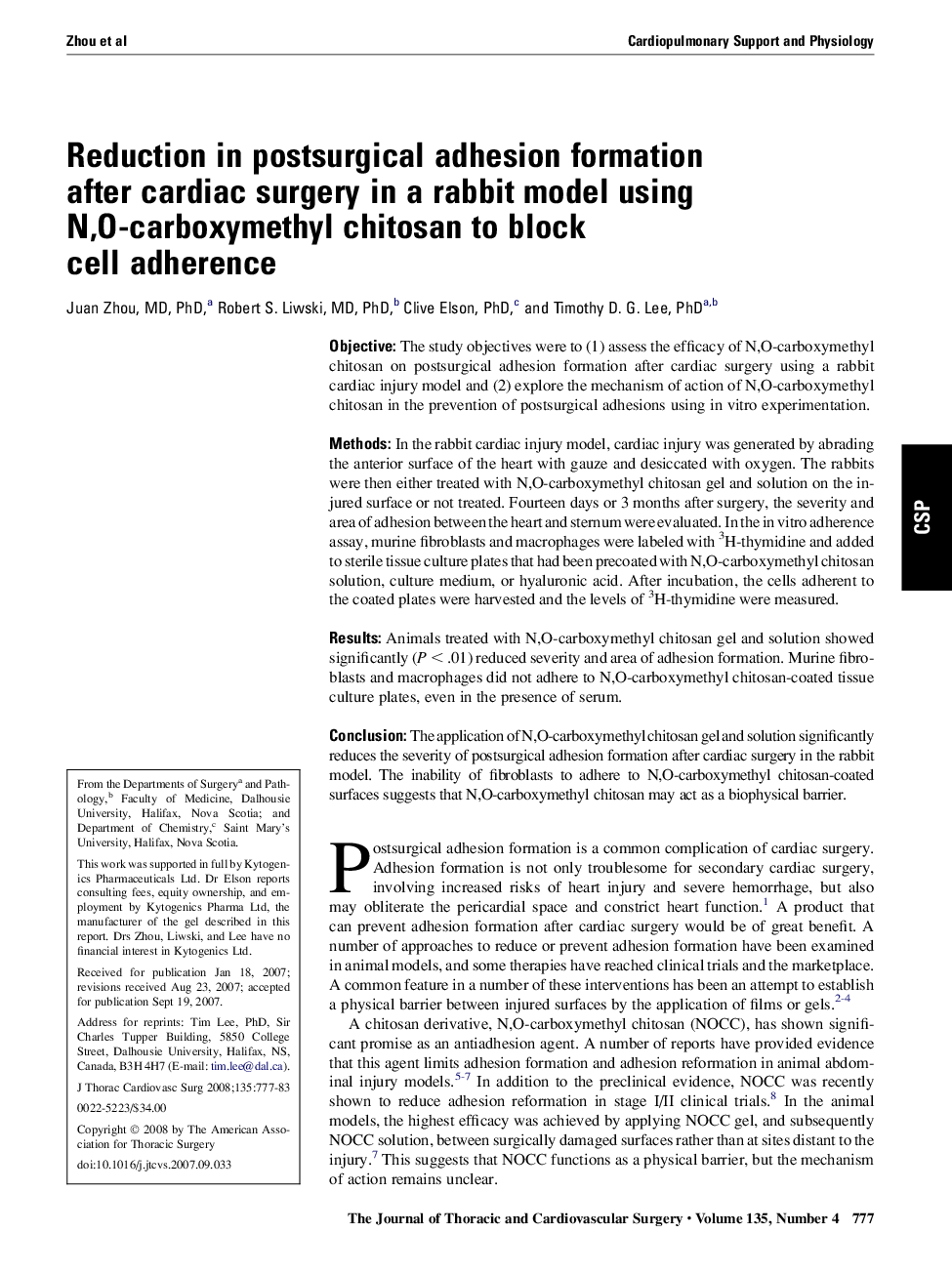| Article ID | Journal | Published Year | Pages | File Type |
|---|---|---|---|---|
| 2986586 | The Journal of Thoracic and Cardiovascular Surgery | 2008 | 7 Pages |
ObjectiveThe study objectives were to (1) assess the efficacy of N,O-carboxymethyl chitosan on postsurgical adhesion formation after cardiac surgery using a rabbit cardiac injury model and (2) explore the mechanism of action of N,O-carboxymethyl chitosan in the prevention of postsurgical adhesions using in vitro experimentation.MethodsIn the rabbit cardiac injury model, cardiac injury was generated by abrading the anterior surface of the heart with gauze and desiccated with oxygen. The rabbits were then either treated with N,O-carboxymethyl chitosan gel and solution on the injured surface or not treated. Fourteen days or 3 months after surgery, the severity and area of adhesion between the heart and sternum were evaluated. In the in vitro adherence assay, murine fibroblasts and macrophages were labeled with 3H-thymidine and added to sterile tissue culture plates that had been precoated with N,O-carboxymethyl chitosan solution, culture medium, or hyaluronic acid. After incubation, the cells adherent to the coated plates were harvested and the levels of 3H-thymidine were measured.ResultsAnimals treated with N,O-carboxymethyl chitosan gel and solution showed significantly (P < .01) reduced severity and area of adhesion formation. Murine fibroblasts and macrophages did not adhere to N,O-carboxymethyl chitosan-coated tissue culture plates, even in the presence of serum.ConclusionThe application of N,O-carboxymethyl chitosan gel and solution significantly reduces the severity of postsurgical adhesion formation after cardiac surgery in the rabbit model. The inability of fibroblasts to adhere to N,O-carboxymethyl chitosan-coated surfaces suggests that N,O-carboxymethyl chitosan may act as a biophysical barrier.
